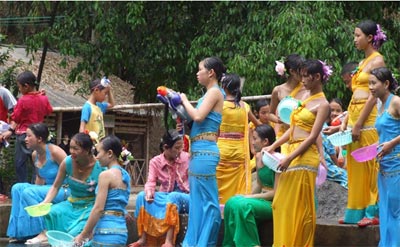гЂЂгЂЂ
 гЂЂгЂЂ
гЂЂгЂЂ
гЂЂгЂЂThe Dai are valley-dwelling rice cultivators of China's southwest frontier. The name "Dai" has been used officially since 1953 to replace "Tai" or "Thai." There are three major subgroups: Dailаѓј(who used to be called "Shui Baiyi" and "Shui Dai" by the Han, meaning "the Baiyi or Dai living near the water"); Daina (Han Baiyi or Han Dai, Chinese Baiyi or Dai); and Daija (Huayao Dai, "the Dai wearing bright-colored blouses"). Within each subgroup there are regional units such as Daide, Daipeng, Daila, Dailian, and Pudai. Neighboring groups—Lahu, Hani, Jingpo, Benglong, Wa, Bulang, and Achang—call the Dai "Bitso," "Siam," or "La Sam."
гЂЂгЂЂThe Dai live exclusively in Yunnan Province, mostly along the Yunnan-Myanmar (Burma) border. Over 55 percent of the population lives in the Dehong Dai and Jingpo Autonomous Prefecture and the Xishuangbanna Dai Autonomous Prefecture; about 7 percent live in the border areas of the Lincang Prefecture. The rest are spread throughout south and southwestern Yunnan, with a very small number living in the north of the province.

гЂЂгЂЂThe Dai ethnic group was the first in history to plant rice and to use a furrow to plough. Living in a subtropical climatic zone with abundant rainfall and fertile land, Dai's main products are rice, sugar cane, coffee, hemp, rubber, camphor, and various fruits. Besides rare plants and herbs, animals such as elephants, tigers and peacocks can also be found in the residential areas of the Dai people.